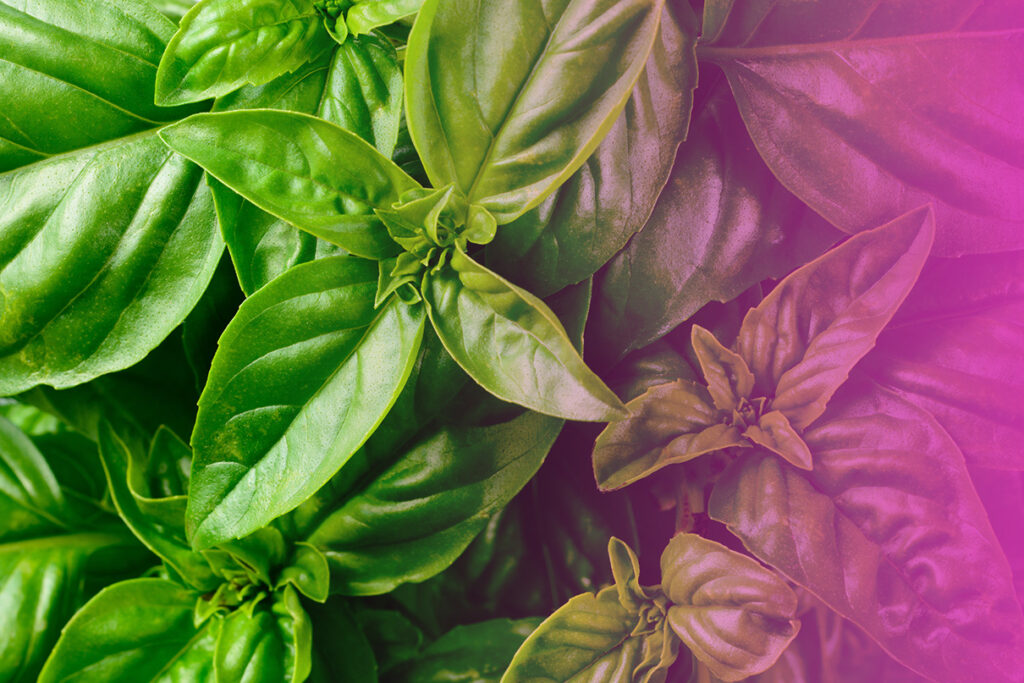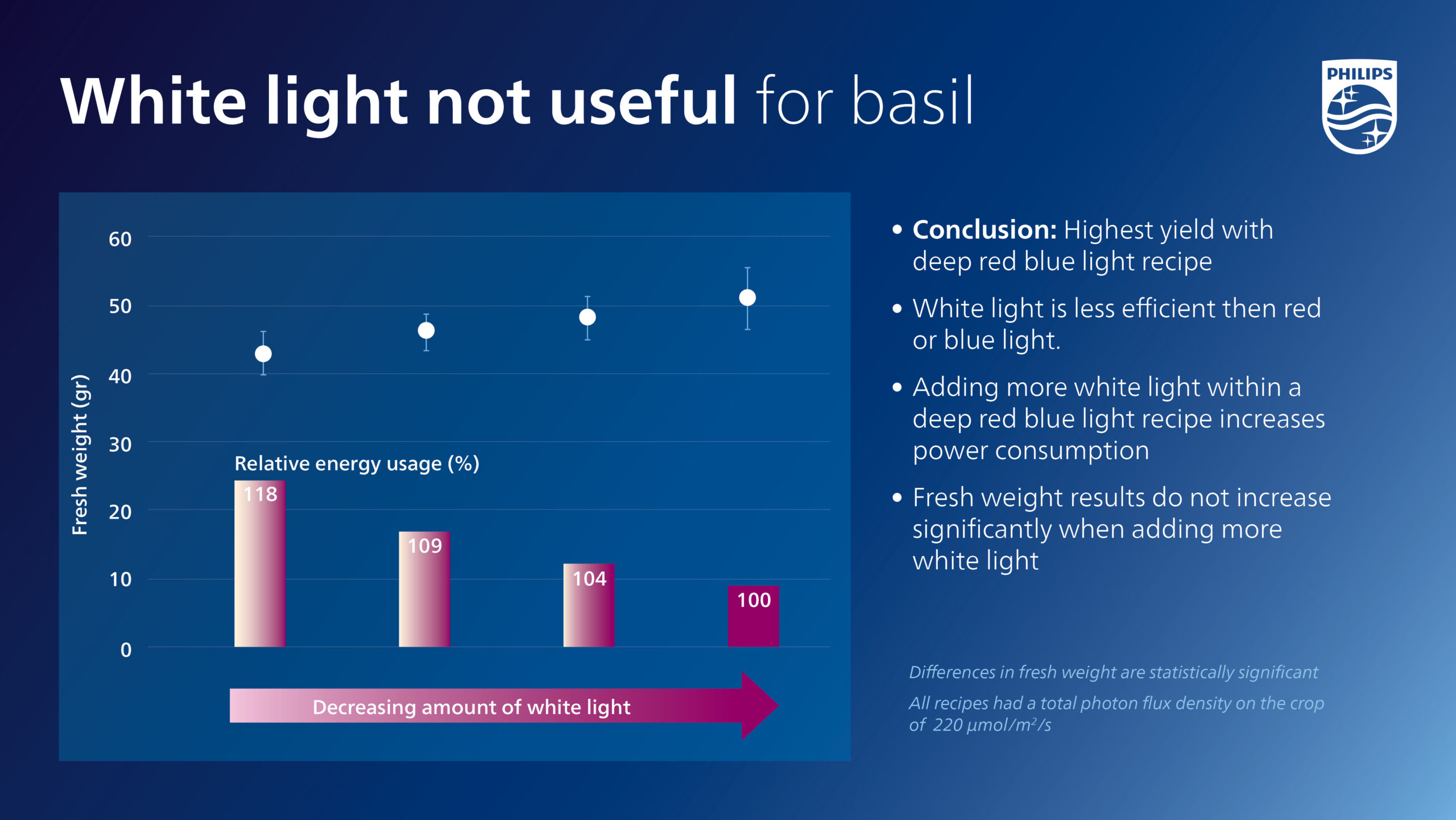Silvia Booij and Leonie Geerdinck, researchers at Signify Research in the Netherlands, have been testing LED light recipes in basil cultivation and they have reached an outcome matching similar experiments with other crops.
As with previous light measuring studies conducted at Wageningen, using lettuce, tomato and spinach plants, white light does not add any value to Basil plants themselves. Indeed compared to red and blue light, white LEDs only increase energy consumption costs.
This may come as no major surprise, in my own use of LED grow lights I found long ago that red and blue LED grow lights made the most difference with my home grown seedlings and plants. This seems to be especially noticeable when growing wide-leaved plants such as squashes.
In their own tests, Booij and Geerdinck used a Philips GreenPower LED production module. They grew three consecutive crops of Basil in a climate chamber at the Philips GrowWise research center, with a light level of 220 µmol/m2/s each time. The amount of white light was varied at the expense of red and blue light, establishing that the fresh weight decreases as the proportion of white light increases:
Is white light necessary at all in growing plants?
White light does of course play a necessary role in the assessment of leaf colour and plant health when there is no daylight available, but otherwise it likely does not need to be in permanent use.
This information should ensure that growers utilising LED grow lights are able to optimise their lighting choices whilst cutting down their energy costs, without impacting on yields or plant quality.




